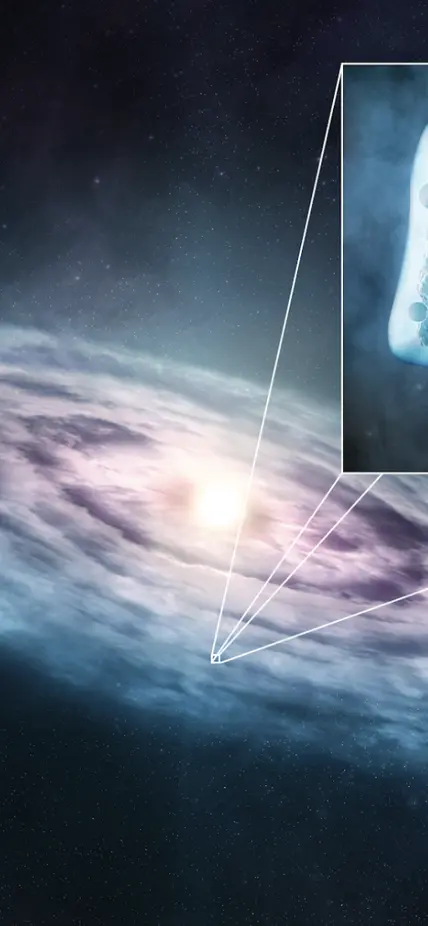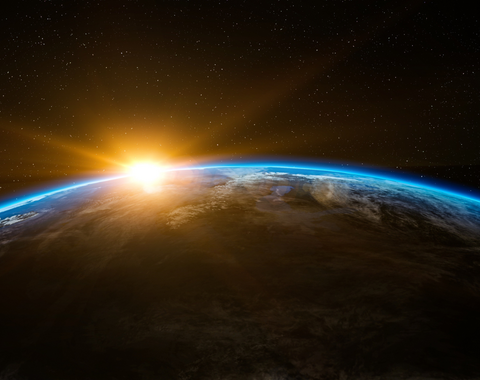Contact: Peter Gao at pgao@carnegiescience.edu
Washington, DC— A team of astronomers, including Carnegie’s Peter Gao, has solved one of the biggest outstanding mysteries about the environment in which baby planets are born. Their findings are published by Nature Astronomy.
In their youth, stars are surrounded by a rotating disk of gas and dust—the raw material from which planets and other celestial objects form. Over time, this material aggregates to build planets, as well as the parent bodies of asteroids and many meteorites.
In studying these planetary nurseries, astronomers frequently observe carbon monoxide, which is ultra-bright on their instruments, making it a prime target for observers.
But for the last decade or so, something hasn’t been adding up when it comes to carbon monoxide observations, explained the paper’s lead author, Diana Powell of the Center for Astrophysics | Harvard & Smithsonian. Theorists’ models of planetary system formation indicate that there should be more carbon monoxide present in these planet-forming disks than astronomers can see. A huge chunk of it is missing from observations.
A new model initially created by Gao to study clouds on exoplanets, modified by Powell to apply to protoplanetary disks, and validated with observations using the 60 radio telescope antennae of the Atacama Large Millimeter/submillimeter Array, or ALMA, revealed that carbon monoxide has been hiding in plain sight in disk ice formations, which are not detectible with a telescope.
The model shows that carbon monoxide is forming on large particles of ice—especially after a million years of a disk’s existence. Gaseous carbon monoxide is abundant and detectable in younger disks.
Inaccuracies in carbon monoxide abundances could have huge implications for the field of astrochemistry.
“Carbon monoxide is essentially used to trace everything we know about disks—like mass, composition, and temperature,” Powell explained. “This could mean many of our results for disks have been biased and uncertain because we don’t understand the compound well enough.”
Gao added that this work opens the door to further applications of the cloud microphysics deployed in his model to disk science and the formation of icy grains in disks.
“It will be interesting to see how water ice formation in disks, for example, is impacted by microphysical considerations, and in turn how these processes affect planet formation and composition,” he said. “This work also illustrates the breakthroughs that can happen when two seemingly disparate fields come into contact, so it's very exciting! I'm really looking forward to where this can lead, especially if we can validate the model using JWST.”
This work benefited from the Exoplanet Summer Program in the Other Worlds Laboratory (OWL) at the University of California, Santa Cruz, a program funded by the Heising-Simons Foundation.
The Carnegie Institution for Science (carnegiescience.edu) is a private, nonprofit organization headquartered in Washington, D.C., with three research divisions on both coasts. Since its founding in 1902, the Carnegie Institution has been a pioneering force in basic scientific research. Carnegie scientists are leaders in the life and environmental sciences, Earth and planetary science, and astronomy and astrophysics.



